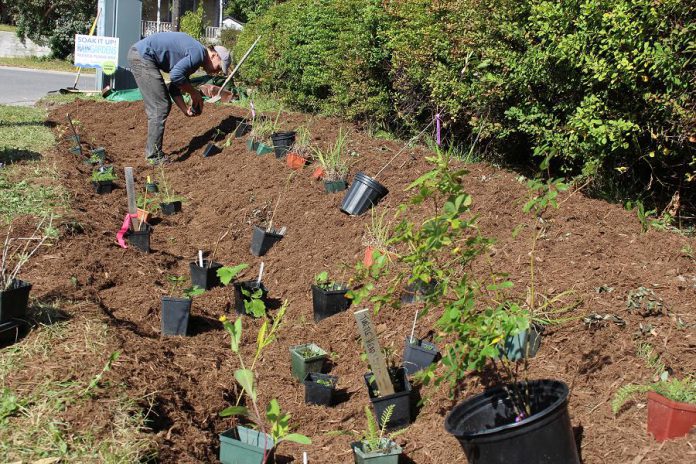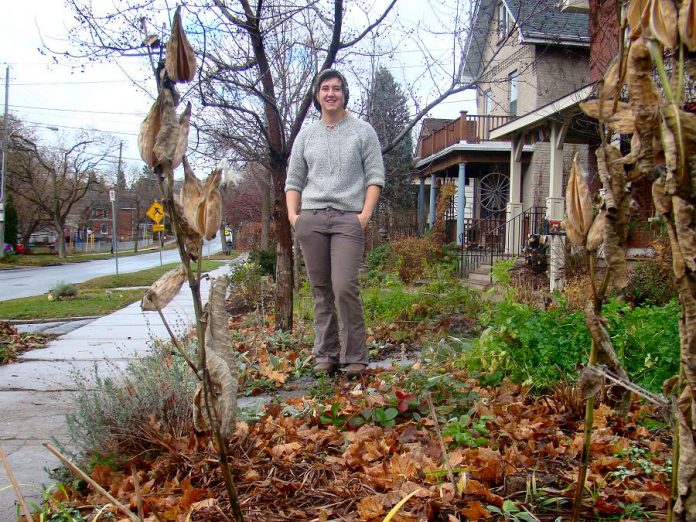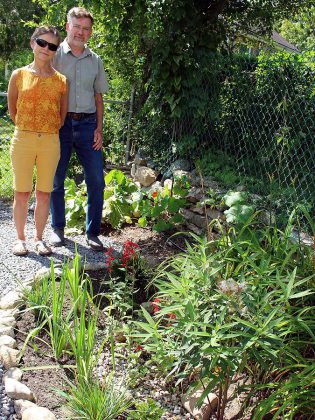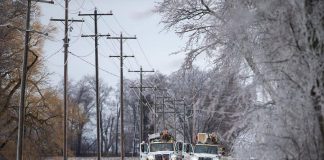
Gardening is the act of curating a natural space by manipulating and influencing living things to realize our ecological design dreams. It becomes beautiful art when done with grace and respect for the natural ecosystem.
When designing a garden, we cannot ignore that we are working with a living system. Unlike painting on a canvas, we do not have total control over it. The plants will grow, move, die, and thrive in response to their environment.
“Pure and simple design resists the passing of time,” explains Julie Moore-Cantieni of Modern Landscape Designers, a regular guest with the CHEX TV’s Let it Grow series. “When I design a garden, my inspiration comes from Mother Nature. I try to imitate her so that the design becomes one with nature.”
“From my perspective, it is about producing a sense of place that is expressed through a thoughtful, spatial composition,” Moore-Cantieni says. “The power of relationship between the space and its elements must address the comfort of people by conveying meaning, without forgetting the importance of the site practicality, as well as the ecological aspect of sustainability.”
Just how do we incorporate nature’s lessons while we create works of art in our gardens, all while fitting in the season’s other joys like bike riding, camping, and relaxing at the beach?
Our advice to everyone is to keep things simple.
Many of us aspire to keep our gardens simple and “low maintenance” but, in reality, we can rarely achieve a low-maintenance garden because no garden is “no maintenance”. Plants are often described as low maintenance, but once they are in their new home in your garden, they may experience growing pains.

Whether you are a beginner or seasoned gardener, it can feel intimidating to take on the challenge of building a new garden or expanding the one you have. If your goal is to not just build a garden but also create an ecologically thriving space, the intimidation factor can double.
Let’s follow the age-old saying “Right plant, right place”, as even low-maintenance plants have preferred growing conditions.
Here are a few tips to help you create easy, artful, eco-friendly gardens:
Choose native plants
Native plants will not only make your garden more resilient to the local climate, but they will help conserve water as native species need less watering than the typically thirstier tropical plants.
Include more perennials and fewer annuals
Annuals are much more demanding when it comes to watering, which makes them higher maintenance and less water wise.
If you do want to include annual blooms in your garden beds, try sowing some wildflower seeds like calendula, cosmos, or bachelor’s buttons.
Once established, these species do not require as much water and will give you long-lasting blooms, just like the traditional annual species.
Plant for the sun conditions
When you are buying a new plant or researching a plant online you will notice that they are often categorized by their sunlight requirements.
Some common categories include full sun, partial sun, partial shade, or full shade.
What do all these terms mean? Think of them as a sliding scale of sunshine requirements:
- Full sun: six hours or more of sunlight exposure daily
- Partial sun: four to six hours of sunlight exposure daily
- Partial shade: two to four hours of sunlight exposure daily
- Full shade: less than two hours of sunlight exposure daily
This weekend, make a point of checking the sun exposure in your garden and be sure to check the location every few hours throughout the day. Create a sun map by sketching out your yard, and track how the sun casts shadows on your yard by outlining the shaded areas at regular increments. This will help you decide where you can plant full sun, part shade, or full shade plants in your yard.

Go with the flow
Unlike paved surfaces, garden soil naturally encourages the water cycle by naturally filtering water. Water is an essential part of life and a vital ingredient for a healthy and thriving garden. Unfortunately, a natural water supply can be unpredictable. The droughts and floods that we experience throughout the season can result in inconsistent watering in our gardens.
Water also flows with the topography of the land and is not equally available in all areas. Our gardens and yards are not immune to the ebb and flow of water movement in our region. However, knowing the land and how water moves along it can help you create and care for gardens that have been planted with the knowledge that the water conditions are right for that species.
Dan Cooper, co-author of Gardening from a Hammock, a how-to book on creating low-maintenance gardens, is a strong advocate for choosing resilient plant species for your garden conditions.
“With climate change we will be experiencing more severe and more frequent extreme weather events like flooding and extended droughts,” Cooper writes, “so dealing with heavy rain falls, drought in our gardens, and the loss of habitat for beneficial insects and pollinators will become more important issues in our lives. Installing a rain garden is a good solution to water runoff from roofs and driveways and will help keep excess water out of our storm sewers and water treatment facilities.”
Rain gardens

Rain gardens are sunken gardens designed to collect and soak up rainwater. They are most effective in places that collect runoff from impermeable surfaces like under the roof of your home or the area around your driveway. Rain gardens look just like regular gardens, however the species planted in them are chosen for their ability to thrive in the variable water conditions.
Rain gardens also help to protect our lakes and rivers from urban pollution. Rain often washes pollutants from impermeable surfaces into our waterways, but a rain garden directs these pollutants into the soil for filtering, which restores the natural water cycle and simultaneously provides the plants in the garden with enough water for growth.
While flooding is a concern for many residents, drought is often an issue that plants face in the height of our Peterborough summers. It can be difficult to make sure our plants are amply hydrated during times of drought, especially as we try to conserve our water usage.
Water-wise and pollinator gardens
The Water Wise program at GreenUP encourages us to conserve water in the yard by adapting how we water and what we plant.
The rule of thumb is that native plants are better adapted to our climate, as they have evolved to thrive in our local conditions, whereas plants that are native to other places in the world, that have adapted to different climates, often struggle in our region and therefore require more assistance from us.
“Drought-tolerant plants will also become more important to gardeners who are coping with extended droughts and water restrictions,” Cooper writes. “My favourite drought-tolerant plants are some of our prairie natives, like blazing star (Liatris spicata), eastern bluestar (Amsonia tabernaemontana), prairie smoke (Geum triflorum), and red barrenwort (Epimedium rubrum). These species are also great for butterflies and other insects.”
Drought-tolerant water-wise gardens and flood-resistant rain gardens can both also provide food, water, and shelter for bees, butterflies, birds, and other pollinators.
Pollinator gardens usually include:
- Native plants (as these provide the best food source for the native pollinators)
- Water source (such as a pond, wetland, or small pebble-filled water dish)
- Messy areas (leaving a pile of sticks or plant material will provide shelter for many pollinators)
- Blooms (having flowers available throughout most of the season provides a steady supply of food for pollinator)
- Pesticide free (gardens that provide an environment free of pesticides, herbicides, and insecticides will support pollinators)

Whether you prefer tending to your plants or would rather your garden be somewhat self sufficient, knowing your yard and planting the right plant in the right place can help you grow a healthy beautiful garden that supports native pollinators and conserves water.
If you are interested in learning more about environmentally conscious gardening join us on Saturday as we plant a 787-square-metre garden in downtown Peterborough at 100 Water St. Email dawn.pond@greenup.on.ca to sign up. Join us and spend the day planting and learning about rain gardens while planting native species.
For further information about the Water Wise program, contact GreenUP Water Programs Manager Heather Ray at heather.ray@greenup.on.ca or visit greenup.on.ca/water-wise for more Water Wise tips, tricks, and inspiration.


























